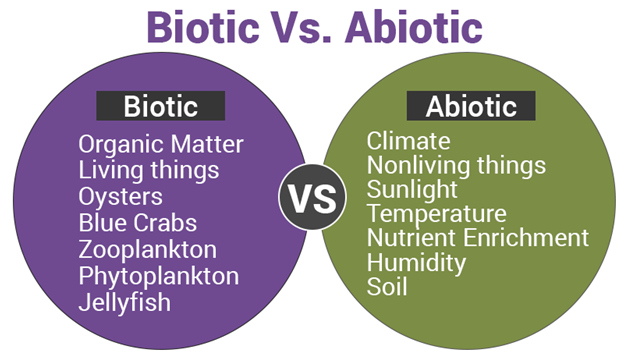Abiotic And Biotic Factors

The biodiversity and distribution of organisms within an ecosystem is due to both abiotic (non-living) and biotic (living) factors. Abiotic factors are non-living variables that can influence where. Abiotic factors are non-living factors in an ecosystem. As part of the ecosystem, these factors do affect the living things in it, but they are not living themselves. The term “abiotic” comes from the root parts “a-” meaning “without,” and “bio,” meaning “life.” The living parts of an ecosystem are called “ biotic factors.”.
The term biotic means living or having lived. Examples of biotic
factors would include a frog, a leaf, a dead tree, or a piece of
wood. The term abiotic means non-living, or never having lived.
Examples of abiotic factors would include air, water, soil,
sunlight, temperature, and climate.
Abiotic factors are essentially non-living components that

effect the living organisms of the community.
When an ecosystem is barren and unoccupied, new organisms
colonizing the environment rely on favorable environmental
conditions in the area to allow them to successfully live and
reproduce.
These environmental factors are abiotic factors. When a variety
of species are present in such an ecosystem, the consequent actions
of these species can affect the lives of fellow species in the
Bin folder minecraft 1.3.2. area, these factors are deemed biotic factors.
Biotic factors : Animals, trees, bacteria, etc. Abiotic factors :
Water, Air, Sun, rocks, etc. Biotic factors are living things and
Abiotic factors are non-living things.